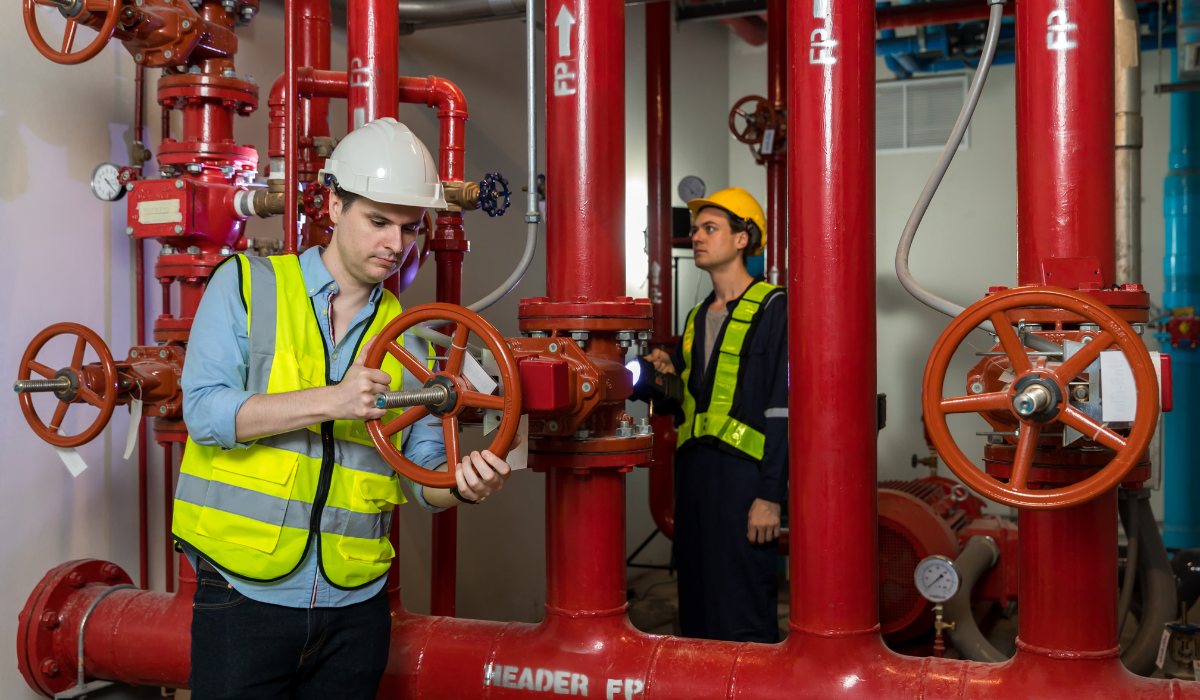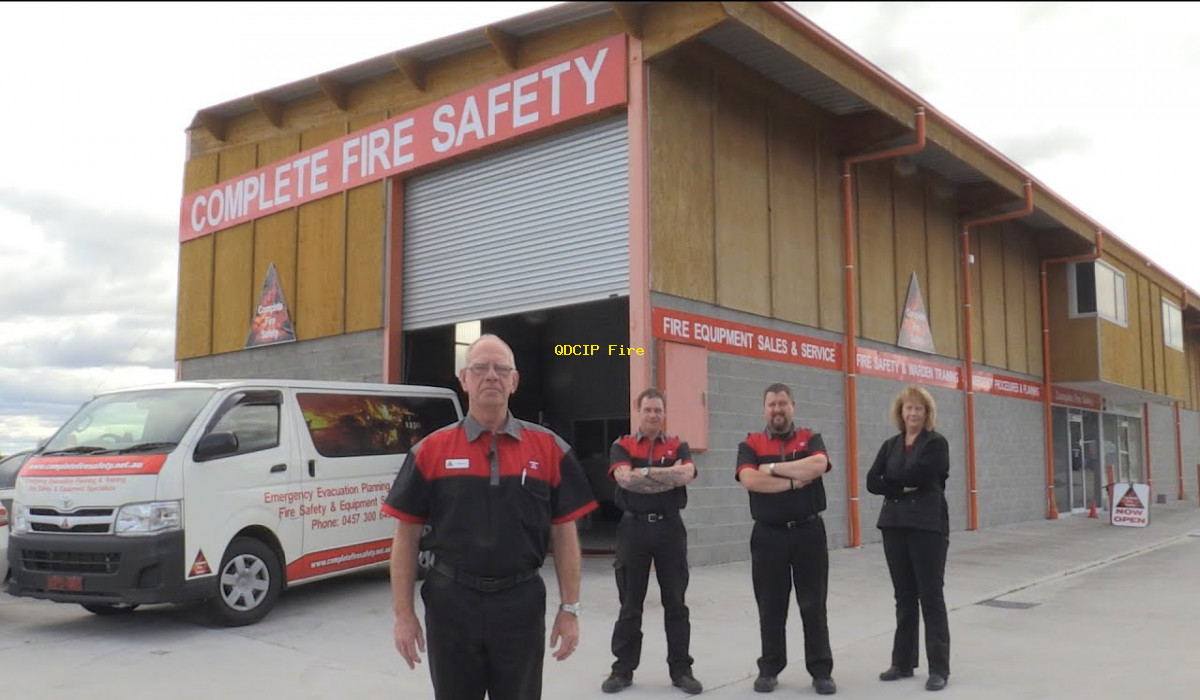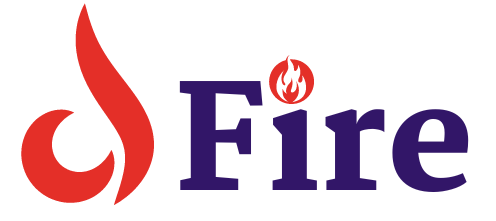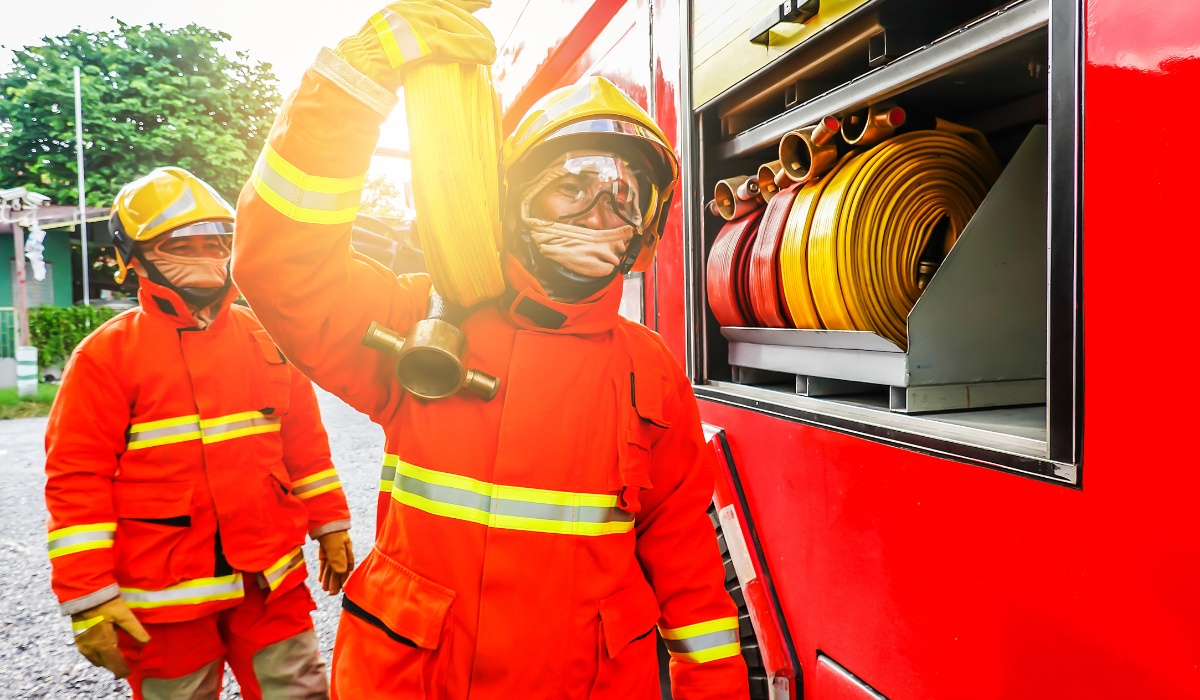With a comprehensive fire protection system in place, a facility can minimize the risk of damage and injuries caused by fires. This includes having properly maintained smoke detectors, fire alarms, sprinkler systems, and fire extinguishers. Regular inspections and training for employees on fire safety protocols are also crucial. By investing in fire protection measures, a business can protect its employees, customers, assets, and reputation. Prioritizing fire safety not only ensures compliance with regulations but also provides peace of mind for everyone in the building.
5 Simple Steps to Complete Fire Protection: Everything You Need to Know. Get complete fire protection services to keep your property safe. Our experts ensure quick responses & top-notch solutions for all your fire safety needs.
Understanding The Importance of Complete Fire Protection
Fires can be devastating, causing damage to property, injuries, & even the loss of life. That’s why it’s crucial to have effective fire protection measures in place to prevent fires from occurring and minimize their impact if they do happen. Complete fire protection encompasses a range of strategies & technologies designed to keep buildings & occupants safe from the threat of fire.
One key aspect of complete fire protection is fire detection systems. These systems are designed to quickly detect the presence of a fire & alert building occupants so they can evacuate safely. Smoke detectors, heat sensors, & flame detectors are common components of fire detection systems, & they play a critical role in early fire detection.
Another important element of complete fire protection is fire suppression systems. These systems are designed to extinguish fires or contain them until firefighters arrive. Common types of fire suppression systems include sprinkler systems, fire extinguishers, & fire blankets. Having the right fire suppression system in place can make a significant difference in limiting the spread of a fire & preventing further damage.
Types of Fire Protection Systems
There are various types of fire protection systems available, each with its own unique features & benefits. Understanding the differences between these systems can help you choose the right one for your specific needs.
- Water-based fire protection systems: These systems use water as a primary agent for extinguishing fires. They include sprinkler systems & fire hoses.
- Chemical-based fire protection systems: These systems use chemicals such as foam or dry chemicals to suppress fires. They are often used in areas where water-based systems may not be suitable.
- Gas-based fire protection systems: These systems use gases such as carbon dioxide or halon to displace oxygen & suppress fires. They are commonly used in areas where water- or chemical-based systems may cause further damage.
Choosing the right fire protection system for your building depends on various factors, including the type of occupancy, the size of the building, & potential fire risks. Consulting with a fire protection specialist can help you assess your needs & develop a comprehensive fire protection plan.
Comparing Fire Protection Technologies
| Feature | Water-based Systems | Chemical-based Systems | Gas-based Systems |
|---|---|---|---|
| Primary Extinguishing Agent | Water | Chemicals | Gases |
| Common Applications | Residential and commercial buildings | Industrial facilities, laboratories | Data centers, electrical rooms |
| Effectiveness | Highly effective for most fires | Effective for Class A, B, & C fires | Effective for Class B & C fires |
When it comes to complete fire protection, there is no one-size-fits-all solution. It’s essential to assess your specific needs & risks to determine the best combination of fire protection systems for your building. By implementing a comprehensive fire protection plan, you can help ensure the safety of your occupants & the protection of your property in the event of a fire.
My Experience with Fire Protection

Having worked in the fire protection industry for over a decade, I have seen firsthand the importance of having robust fire protection measures in place. From designing fire suppression systems to conducting fire safety inspections, every aspect of fire protection plays a critical role in keeping buildings safe. I have witnessed the devastating effects of fires that could have been prevented or minimized with the right fire protection systems in place, reinforcing the importance of proactive fire safety measures.
5 Simple Steps to Complete Fire Protection: Everything You Need to Know
Get complete fire protection services to keep your property safe. Our experts ensure quick responses & top-notch solutions for all your fire safety needs.
Keyword: Fire 5 Simple Steps to Complete Fire Protection: Everything You Need to Know
Essential Components of Fire Protection
Fire protection involves various elements to ensure the safety of a building & its occupants. One critical component is fire alarms, which detect smoke or heat & alert individuals to evacuate the premises. Fire extinguishers are another essential tool to extinguish small fires before they escalate. Additionally, fire sprinkler systems can suppress fires & prevent them from spreading.
Regular inspection & maintenance of fire protection systems are crucial to ensuring their proper functioning when needed. Training employees on fire safety protocols & evacuation procedures is also vital to enhancing overall fire protection measures.
Furthermore, having an emergency response plan in place can help minimize chaos during a fire incident & ensure a systematic approach to handling the situation.
Types of Fire Detection Systems
There are several types of fire detection systems available, including smoke detectors, heat detectors, flame detectors, & gas detectors. Smoke detectors are the most common & affordable option, as they can quickly detect smoke particles in the air.
Heat detectors are suitable for environments with high dust levels or humidity, where smoke detectors may not be effective. Flame detectors are designed to detect the presence of flames, making them ideal for areas with high heat or open flames.
Gas detectors are used to identify hazardous gases, such as carbon monoxide, & can trigger an alarm if dangerous levels are detected.
Benefits of Fire Sprinkler Systems
Fire sprinkler systems are highly effective in controlling & extinguishing fires, reducing property damage, & saving lives. These systems respond quickly to a fire outbreak, releasing water or other extinguishing agents to suppress the flames.
Installing fire sprinkler systems can also lead to lower insurance premiums for building owners as they demonstrate a commitment to fire safety & risk mitigation. Additionally, sprinkler systems can buy time for occupants to evacuate safely & for firefighters to arrive on the scene.
Overall, fire sprinkler systems are a valuable investment in protecting both property & human lives in the event of a fire emergency.
Comparison of Fire Protection Measures
| Feature | Fire Alarms | Fire Extinguishers | Fire Sprinkler Systems |
|---|---|---|---|
| Detection Capability | Smoke or heat detection | Manual operation | Automated suppression |
| Deployment | Throughout A building | Portable units | Fixed in place |
| Effectiveness | Early warning system | For small fires | Suppresses fires |
Enhancing Fire Protection Measures
In addition to standard fire protection systems, there are advanced technologies that can further enhance fire safety in buildings. These include flame-retardant materials, fire-resistant barriers, & automatic fire suppression systems.
Flame-retardant materials can slow down the spread of fire & reduce its intensity, giving occupants more time to evacuate safely. Fire-resistant barriers can compartmentalize a building to contain a fire & prevent it from spreading rapidly.
Automatic fire suppression systems, such as gaseous suppression or foam systems, can quickly extinguish fires without the need for human intervention, providing an added layer of protection in high-risk environments.
Comprehensive Fire Protection Training: Equipping for Safety and Preparedness

Completing fire protection training typically involves several key components aimed at educating individuals on fire safety, prevention, and response procedures. Here’s a comprehensive outline of what might be covered in such training:
Introduction to Fire Safety:
- Understanding the nature of fire: how it starts, spreads, and behaves.
- Recognizing different classes of fires (e.g., Class A, B, C, D, K) and appropriate extinguishing methods for each.
Fire Prevention:
- Identifying common fire hazards in various environments (e.g., homes, workplaces).
- Implementing best practices for preventing fires, such as proper storage of flammable materials, electrical safety measures, and smoking policies.
Emergency Planning:
- Developing and practicing evacuation plans for different types of buildings.
- Assigning roles and responsibilities during a fire emergency.
- Understanding the importance of communication and coordination with emergency services.
Fire Extinguisher Training:
- Types of fire extinguishers and their appropriate uses.
- Hands-on training on how to operate a fire extinguisher safely and effectively.
- Understanding the PASS technique (Pull, Aim, Squeeze, Sweep) for using a fire extinguisher.
Fire Detection and Alarm Systems:
- Familiarization with various types of fire detection systems (e.g., smoke detectors, heat detectors).
- Proper maintenance and testing of fire alarms.
- Responding to fire alarm signals and initiating emergency procedures.
Emergency Response Procedures:
- Knowing when and how to evacuate a building safely.
- Understanding the importance of staying low to the ground in smoky environments.
- Recognizing the need to close doors behind you to prevent the spread of fire and smoke.
First Aid for Fire-Related Injuries:
- Basic first aid techniques for treating burns and smoke inhalation.
- Understanding when to seek medical assistance for fire-related injuries.
Specialized Training (Optional):
Depending on the specific workplace or industry, additional training may be required. For example, industrial settings might require training in handling hazardous materials or dealing with fires involving specialized equipment.
Review and Assessment:
- Regular review sessions are needed to reinforce key concepts and ensure the retention of information.
- Assessments to evaluate individuals’ understanding of fire safety principles and procedures.
Continued Education and Training:
- Fire protection training should be ongoing to stay updated on the latest safety standards, regulations, and best practices.
This outline provides a comprehensive overview of what might be included in a complete fire protection training program. The specifics may vary depending on the organization, industry, or jurisdiction. Additionally, practical, hands-on exercises and simulations are often incorporated to enhance learning and prepare students for real-life emergencies.
Conclusion
In conclusion, complete fire protection is essential for safeguarding buildings, property, & lives against the devastating effects of fires. By implementing a comprehensive fire protection plan that includes detection systems, suppression measures, & emergency protocols, individuals can significantly reduce the risk of fire-related incidents.
Regular maintenance, employee training, & the use of advanced technologies further enhance the effectiveness of fire protection measures, ensuring a proactive approach to fire safety. Investing in reliable fire protection solutions is a crucial step in mitigating the impact of fires & promoting overall safety & security.
Experience: I once experienced a fire drill at my workplace, where we followed evacuation procedures & gathered at a designated assembly point. It highlighted the importance of preparedness & coordination in ensuring everyone’s safety in the event of a real fire emergency.
5 Simple Steps to Complete Fire Protection: Everything You Need to Know

What are the different types of fire protection systems?
There are several types of fire protection systems, including fire sprinkler systems, fire alarms, fire extinguishers, & fire suppression systems.
How do fire sprinkler systems work?
Fire sprinkler systems work by detecting heat from a fire & activating sprinklers to release water and suppress flames.
What is the role of fire alarms in fire protection?
Fire alarms are essential in fire protection as they alert occupants to the presence of a fire, allowing them to evacuate a building safely.
How should fire extinguishers be maintained for optimal performance?
Fire extinguishers should be inspected regularly, kept in inaccessible locations, & serviced annually to ensure they are in proper working condition.
What are the advantages of fire suppression systems in commercial buildings?
Fire suppression systems can quickly extinguish fires, minimize property damage, & protect occupants in commercial buildings.
What are the common causes of fires in residential settings?
Common causes of fires in residential settings include cooking accidents, electrical malfunctions, smoking, & candles left unattended.


Very interesting points you have observed, thanks for posting.